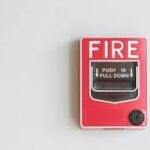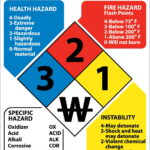
Hazardous Material Classifications
When utilizing any hazardous materials in your warehouse or facility it is important to understand the dangers of using any chemicals and the threat they might pose to your employees and environment. The better you understand the conditions required for any types of hazardous materials, the less likely it is that you will find yourself in a situation where they will cause harm or damage. Compliance First, Inc. is here to help with that, so you can protect your business, employees, and the public.
When dealing with hazardous chemicals or materials it is important to understand the classification system. When classifying chemicals it is necessary to do so properly, or else it could lead to dangerous situations for those moving the materials or exposed to them.
Types of Hazard Chemical Classification Services
There are nine different types of classifications for hazardous materials, and having a clear understanding each classification will help your workplace run more effectively, and more importantly it will be a much safer place for your employees to work. The different types of classifications include the following:
- Class 1 of the hazardous materials is for any form of explosive.
- Class 2 for the hazardous materials is if there are any types of gases.
- Class 3 is for flammable liquids and for combustible liquids.
- Class 4 is for flammable solids, spontaneously combustible, and dangerous when wet.
- Class 5 of the hazardous materials is dedicated to oxidizers and organic peroxide.
- Class 6 is for Poison (toxic) and poison inhalation hazards.
- Class 7 is for anything radioactive.
- Class 8 is for corrosive materials.
- Class 9 is for other miscellaneous items that may also be considered hazardous.
For a Class 6 hazardous materials, there are actually two divisions within it. Division 6.1 is dedicated exclusively to poisonous materials. Division 6.2 is dedicated exclusively to infectious substances. An infectious substance is a material that is either known to contain a pathogen, or that is reasonably expected to contain a pathogen. A pathogen is a microorganism that causes disease in either humans or animals, or sometimes both. A pathogen also includes other types of agents like prions, which is a protein particle that is considered contagious.
Other Regulations for GHS Hazard Classifications
When dealing with hazardous materials, it is important to note that it is also overseen by other forms of regulation that operate on an international and national scale. This is because when dealing with certain hazardous materials it could be extremely dangerous to the public. Some of the agencies that determine how hazardous materials are allowed to be used and stored have created frameworks and references that will also need to be referred to throughout the classification process.
At Compliance First, Inc. we have trained Permit Technicians that will be able to help you with your company’s hazardous materials packet. Identifying which commodities fall into which classification can be confusing, so having some extra help will make for a smoother process. We are committed to working with you and your company to find the best storage solutions that will ensure safety to your employees, your building, and the general public.
Compliance First, Inc.
(714) 572-4410




Request Free Consulation Now!
Compliance First, Inc.
(714) 572-4410
Address 1057 E Imperial Hwy Placentia, CA 92870
Email brooke@compliancefirst.com
